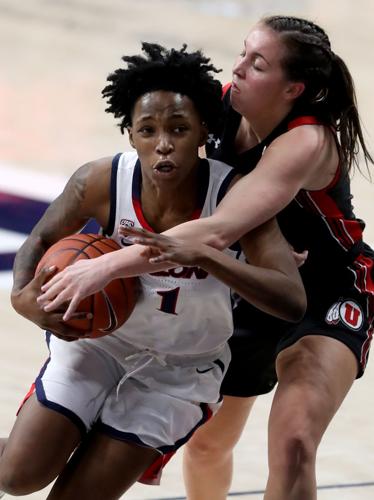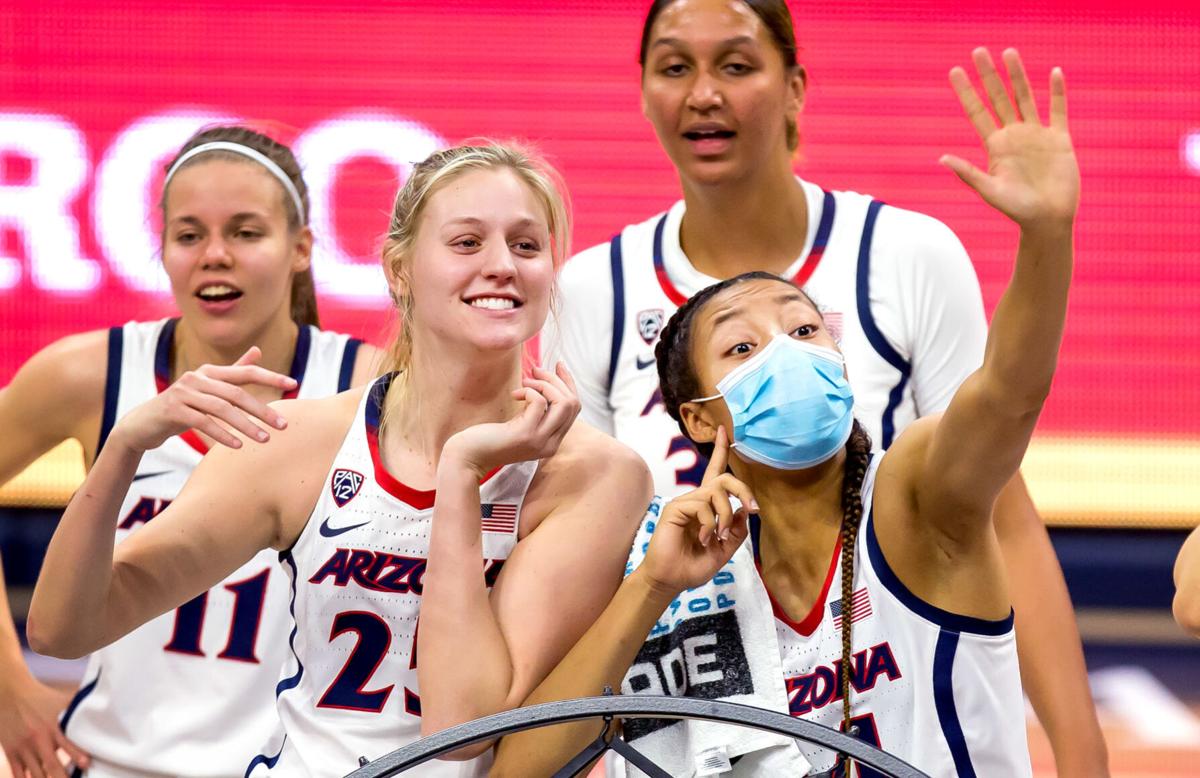For the first 26 years of Pac-12 women’s basketball, the league all but ensured the sport would not grow in visibility.
It scheduled women’s games on the same Thursday-Saturday rotation as its men’s basketball teams. It created a conference-wide blackout and slowed the growth of women’s basketball on the West Coast.
TV games? If you got one televised game a year, you were fortunate. It was the reverse of “Cheers”; if you played Pac-12 women’s basketball, nobody knew your name.
Finally, in 2012-13, the Pac-12 Networks was born. It desperately needed live content. Women’s basketball games were switched to a Friday-Sunday rotation. And although the Pac-12 Networks is not blessed with ESPN-sized audiences, it was a sunshine-on-my-shoulders transformation.
Exposure for Pac-12 women’s basketball has multiplied times 10 or 20 or some other big number.
This year, for the first time, ESPN and ESPN2 broadcast both Arizona-Oregon games. Adia Barnes’ Wildcats swept the three-time-defending conference champion Ducks by a cumulative 36 points.
It was a how-times-change moment. As soon as Monday’s UA-Oregon game signed off on ESPN2, the year’s other UA-Oregon game, played Jan. 14 in Tucson, was immediately replayed on the Pac-12 Networks.
“This is a big-time stage,” Barnes said in a Zoom interview Monday night. The exposure and Arizona’s climb into the top 10 has created such interest that Barnes said if it were not for COVID-19 restrictions, McKale Center “would’ve been sold out multiple times.”
It’s not a stretch to think that under normal conditions, with a full schedule, the Wildcats would’ve already drawn close to 100,000 Tucson fans this year.
Instead? Zero.
But growing television exposure — Arizona will play on ESPN when it takes on No. 5 Stanford on Feb. 22 — and a full season in the top 10 has dulled neither expectations nor attention.
Standout forward Cate Reese, who scored a game-high 25 points at Oregon, said “we keep raising the bar for ourselves.”
Fox Sports 1 announced that its Monday night telecast of No. 1 South Carolina vs. No. 2 UConn drew 461,000 viewers, its record for a regular-season women’s basketball game. Numbers for the Arizona-Oregon game aren’t official, but it’s likely that close to 150,000 viewers tuned in.
Barnes is in a been-there, done-that position to appreciate just how far women’s basketball has come. During her senior year at Arizona, 1997-98, the No. 10 Wildcats stunned No. 7 Washington in a game the Star called “the biggest win in program history.”
Only 2,058 fans showed up at McKale Center. It was not televised.
On the same 1998 Saturday afternoon, Arizona’s No. 5 men’s basketball team routed Washington in Seattle. There is no historic record of TV viewer rankings of UA men’s basketball, but a good guess might be that the men’s audience was 100 times greater than the 2,058 who watched Barnes’ No. 10 Wildcats beat the Huskies that day.
Times change.
After the Wildcats belted the No. 11 Ducks on Monday, Ducks coach Kelly Graves said: “I give them credit. In that second half, they really raised it to another level.”
What makes Graves’ statement so credible is that Oregon’s Matthew Knight Arena is the most dreaded venue for a visiting Pac-12 women’s team. Last year the Ducks averaged a league-record 10,852 fans.
Arizona would’ve surely challenged that record this season.
Even though Arizona can’t chase an attendance record, it can legitimately chase the Pac-12 championship for the first time since the Wildcats tied Stanford for the league title in 2004.
“I would’ve probably laughed at you if someone said you could win the Pac-12 title in your fifth year,” Barnes said. “This is uncharted territory for us, but we haven’t arrived by any means.”

Arizona guard Shaina Pellington (1) gets wrapped up by Utah guard Kennedy McQueen (24) on a drive in their Pac 12 basketball game at McKale Center, Tucson, Ariz., January 22, 2021.
To win the Pac-12 championship — to arrive — Arizona almost certainly needs to win at Stanford on Feb. 22. It would also help if Stanford lost at Oregon on Monday, a game that will be televised on ESPN2.
Then it will be up to the math.
Because of Pac-12 postponements — 10-2 Arizona has five, 14-2 Stanford just one — confusion reigns. Barnes said there is no clarity on possible makeup games. There could be a few. There could be none. After this weekend, Arizona and Stanford will have just three conference games remaining.
The league confirmed Wednesday that it will proceed with plans for the Pac-12 Tournament beginning March 4. That doesn’t make it realistic to squeeze in a few make-up games.
The Pac-12 further told Arizona officials that the team with the highest winning percentage shall be considered league champion. Let’s say Stanford finishes 18-3 and Arizona 14-3. Those numbers don’t work for Arizona.
That means the Wildcats have one realistic hope — win every remaining game and finish 15-2 to Stanford’s 18-3. Arizona would then be the champs with an 88.2 winning percentage to Stanford’s 85.7.
It is possibly even more complicated because 9-3 UCLA, which has had five games postponed, seems likely to win out and finish 14-3.
Either way, math or no math, enjoy the 2020-21 Wildcats while you can. Sunday is “Senior Day” at McKale Center. The much-anticipated season that seemed like it would never begin is quickly nearing an end, ready or not.






